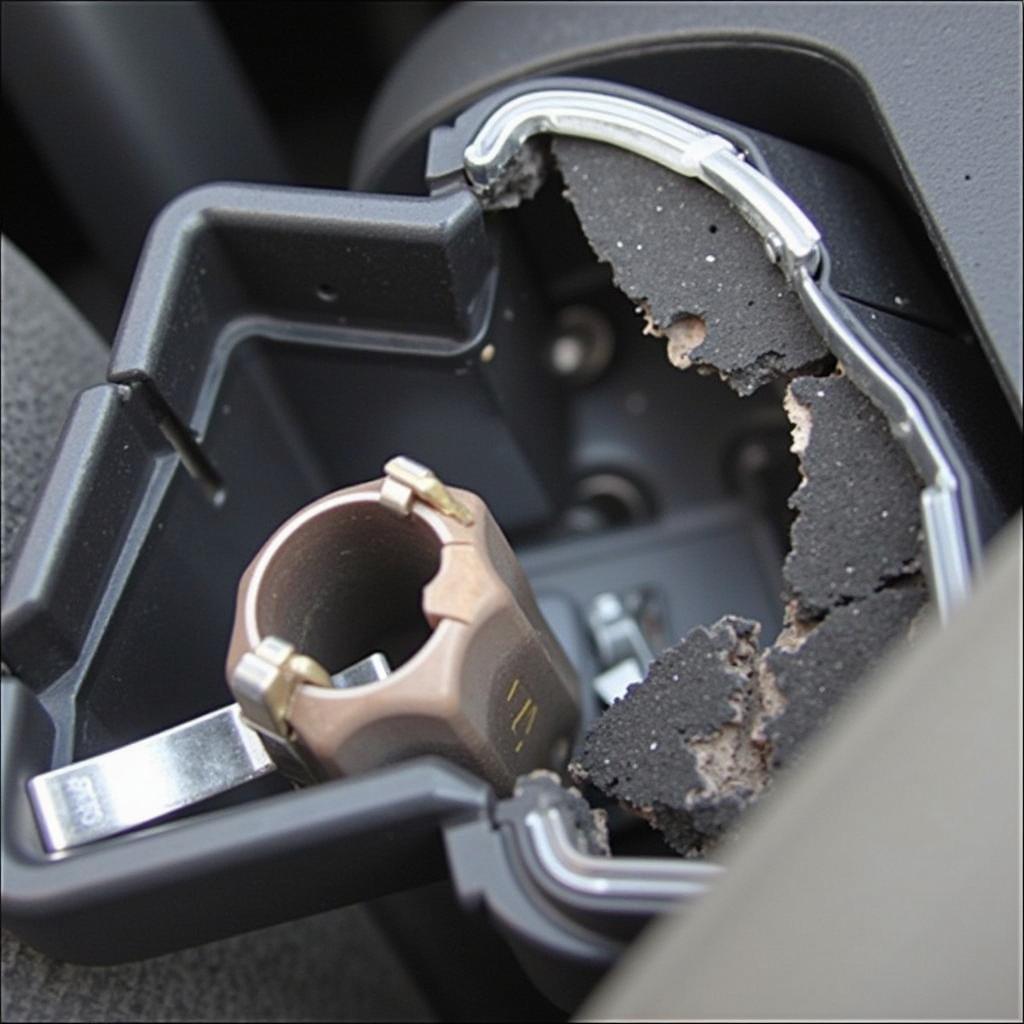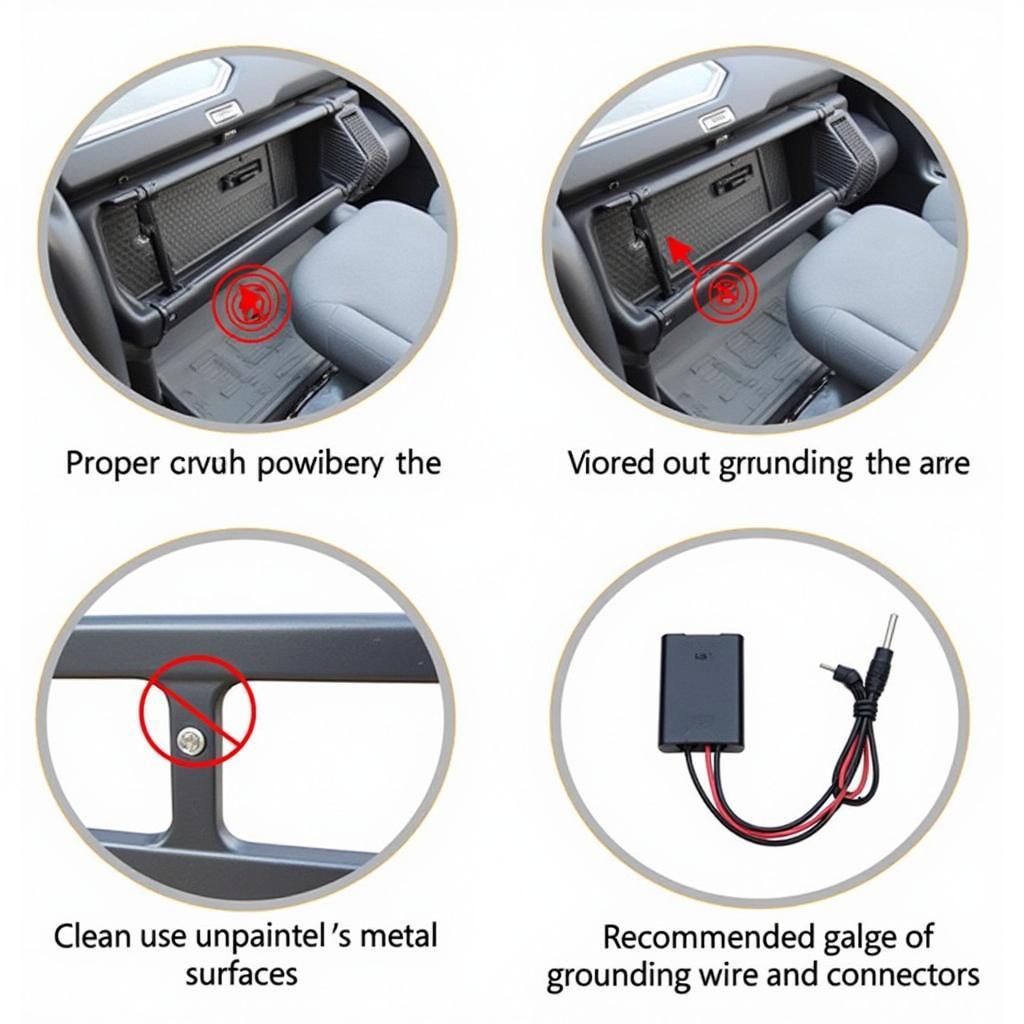AdBlue is a vital component in modern Audi vehicles, helping to reduce harmful emissions. However, when the AdBlue system malfunctions, it can lead to a variety of problems, including the dreaded AdBlue warning light. This light indicates that the system needs attention, and often requires a reset to restore normal operation. If you’re facing an AdBlue issue on your Audi, this guide will walk you through the process of resetting the system effectively.
What is AdBlue and Why is it Important?
AdBlue is a urea-based solution that is injected into the exhaust system of modern diesel vehicles. It reacts with harmful nitrogen oxides (NOx) in the exhaust gases, converting them into harmless nitrogen and water. This process is known as Selective Catalytic Reduction (SCR), and it significantly reduces emissions.
Common AdBlue Problems and Symptoms
Several issues can occur with the AdBlue system, leading to warning lights and performance problems. Here are some common symptoms:
- AdBlue Warning Light: This light is the most common indicator of an AdBlue problem. It can illuminate due to low AdBlue levels, a faulty sensor, or a system malfunction.
- Reduced Engine Power: The vehicle may experience reduced power output if the AdBlue system is not functioning correctly. This is a safety measure to prevent further damage.
- Engine Stall: In severe cases, the engine may stall if the AdBlue system fails to function.
- Exhaust Smoke: You may notice excessive exhaust smoke, indicating an issue with the AdBlue system.
Resetting AdBlue on Audi Cars: A Step-by-Step Guide
Resetting the AdBlue system on an Audi can be achieved using a few methods. Let’s explore some common approaches:
1. Using the On-Board Computer (OBD II Scanner)
Most modern Audi vehicles are equipped with an on-board computer system that can be accessed using an OBD II scanner. Here’s how to reset the AdBlue system using this method:
- Connect the Scanner: Plug the OBD II scanner into the diagnostic port located under the dashboard.
- Access the System: Use the scanner to access the vehicle’s computer system.
- Find the AdBlue Reset Option: Navigate through the menus to find the AdBlue reset option.
- Execute the Reset: Follow the prompts on the scanner to execute the reset procedure.
- Test the System: After the reset, restart the engine and observe the AdBlue warning light. It should either extinguish or display a new message indicating a successful reset.
2. Using a Specialized Diagnostic Tool
For more advanced troubleshooting, a specialized diagnostic tool like VCDS (VAG-COM Diagnostic System) can be helpful. This tool provides access to a wider range of vehicle data, including the AdBlue system.
- Connect the Tool: Connect the VCDS tool to the diagnostic port under the dashboard.
- Select the AdBlue Module: Use the software to select the AdBlue module within the vehicle’s computer system.
- Execute the Reset: Within the AdBlue module, locate the reset option and execute the procedure.
- Confirm Reset: After the reset, check for any confirmation messages or changes in the AdBlue warning light.
3. Seeking Professional Assistance
If you’re uncomfortable with DIY methods or experience difficulties resetting the AdBlue system, it’s recommended to consult a professional automotive technician. They have the necessary expertise, tools, and diagnostic equipment to handle complex AdBlue problems.
Frequently Asked Questions
1. Can I Reset AdBlue Myself?
While resetting AdBlue can sometimes be done independently, it’s important to understand the potential risks involved. Incorrect procedures can lead to further damage to the AdBlue system or even harm your vehicle’s engine. If you’re unsure about the process or lack the necessary tools, seeking professional help is the safest option.
2. How Often Should I Reset AdBlue?
You typically don’t need to reset AdBlue regularly. The system is designed to monitor AdBlue levels and alert you when it needs to be replenished. If you experience an AdBlue warning light, resetting the system may be necessary, but it’s not a routine maintenance procedure.
3. Can I Use a Universal AdBlue Reset Tool?
Universal tools may not be compatible with all Audi vehicles. It’s recommended to use a tool designed specifically for Audi models or one that has been tested and verified for compatibility with your car’s specific model year and engine type.
4. What if the AdBlue Reset Doesn’t Work?
If resetting the AdBlue system doesn’t resolve the issue, there might be a more serious underlying problem. This could be a faulty sensor, a clogged AdBlue injector, or a malfunctioning AdBlue pump. In such cases, seeking professional diagnosis and repair is crucial.
5. Can I Disable the AdBlue System?
Disabling the AdBlue system is generally not recommended. It’s an integral part of the emissions control system and plays a crucial role in reducing harmful emissions. Attempting to disable it may void your vehicle’s warranty and potentially lead to legal repercussions.
Conclusion
Resetting the AdBlue system on your Audi can be a straightforward process, but it’s essential to approach it with caution. Understanding the system’s function, potential issues, and available reset methods will help you effectively address AdBlue problems. However, remember that in case of persistent issues or uncertainties, consulting a professional is always the best course of action to ensure the safety and well-being of your vehicle.



